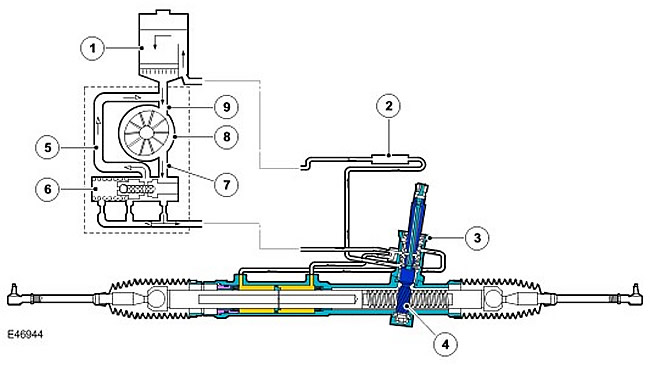
| Item name | Spare part number | Description |
| 1 | - | Tank |
| 2 | - | cooler |
| 3 | - | hydraulic valve |
| 4 | - | Steering rack and pinion |
| 5 | - | Flow control/pressure relief return line |
| 6 | - | Safety valve with flow regulator |
| 7 | - | Outlet |
| 8 | - | Power steering pump |
| 9 | - | Low pressure suction line |
When the engine is running, fluid from the reservoir flows through the low pressure suction line to the power steering pump. Fluid passes through the pump and is pressurized into the outlet. Through a high-pressure hose with an attenuator, the fluid enters the hydraulic control valve of the steering mechanism.
If there is no steering force, there is minimal restriction in the system and the pump is producing low pressure. A minimum pressure is applied through the valve to each end of the piston in the hydraulic cylinder, and all fluid flow from the power steering pump is returned to the reservoir via the power steering fluid cooler.
When force is applied to the steering wheel in any direction, the return flow of fluid to the reservoir is restricted and the pressure generated by the pump increases. Pressurized fluid is directed through a hydraulic valve to the corresponding end of the piston in the hydraulic cylinder, providing increased power and reduced effort required to turn the steering wheel. Fluid displaced from the low-pressure side of the cylinder is returned to the reservoir through the control valve and fluid cooler. The fluid cooler lowers the temperature of the fluid, which extends the life of the system hoses and seals.
Comments on this article